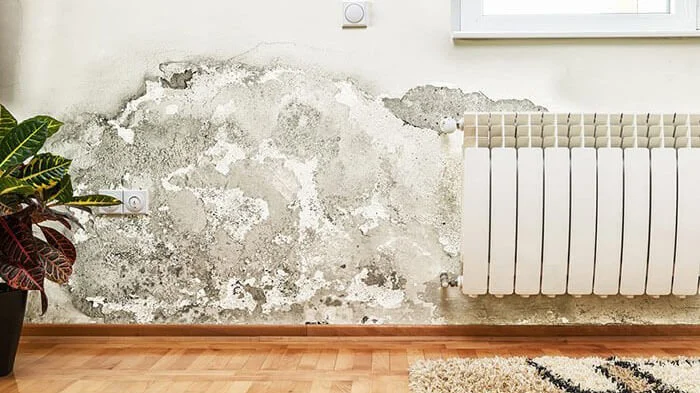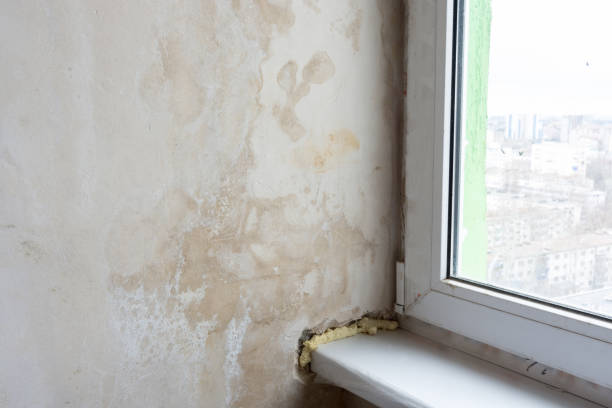There are 3 types of damp you may find in residential properties. Each of these types of damp requires a different type of treatment and the cost for this can vary dramatically, so it’s super important to know what type of damp is affecting your home before you try to get it fixed!
What are the 3 main types of damp?
- Condensation
- Penetrating damp
- Rising damp
Condensation

Condensation is the most common type of damp found in residential property and is caused by excess moisture in the air hitting colder surfaces. If you want to help prevent mould from forming as a result of condensation, you should be monitoring the moisture levels in your home.
For example, when you cook, put a lid on your pans and keep the kitchen well ventilated by installing an extractor fan or keeping the window open.
When taking baths and showers, the bathroom windows should be open, and extractor fans turned on. Try to keep the bathroom door shut as much as possible so the moisture does not escape into other parts of your home. Wet surfaces attract moisture, so wipe them down to get rid of the excess damp.
Signs of condensation
- Streaming windows
- Damp patches on internal walls
- Mould on window seals
- Pools of water on window sills
- Wallpaper falling away or bubbling
- Black mould spots on walls, ceilings and skirting boards
- Musty, damp smell
Penetrating Damp

Penetrating damp is caused by water leaking through walls and tends to move horizontally across your walls, as opposed to vertically, which is the case with rising damp. Penetrating damp is often caused by structural problems within a property like cracks in a wall, or bad guttering, but can also be caused by internal leaks from leaking pipes.
This type of damp can be very damaging to a property – even if it does not fully penetrate a wall, because it can make way for other issues to wreak havoc such as wet rot and dry rot, as well as damp smells and increased heat loss.
Signs of penetrating damp
- Damp patches on walls or ceilings, which may darken when it rains.
- Damp staining on external walls
- Damp patches on walls or ceilings
- Wet and crumbly plaster
- Signs of spores or black mould that are isolated to one area
- Drips and puddles
Rising Damp

Rising damp is caused by ground water moving up through a wall or a floor. It’s natural for walls and floors to allow a little water in, but it’s usually stopped from causing damage by a barrier called a damp-proof course or damp-proof membrane, which is a sheet of water repellent material laid underneath the floor and effectively seals the house.
Sometimes, these physical barriers don’t always work, and it’s common for older buildings to either have a worn or damaged damp proof course, or they may not have one at all.
Rising damp can also happen when there’s a lack of drainage, or the level of the ground outside your home is higher than your damp-proof course, allowing water to get above it.
Signs of rising damp
- Damaged skirting boards or plaster
- Peeling paint and wallpaper, often with wet patches
- A white, powdery residue on the wall
- Tide marks rising up the wall
- If the problem is coming up from the floor, you may notice floor coverings lifting up










